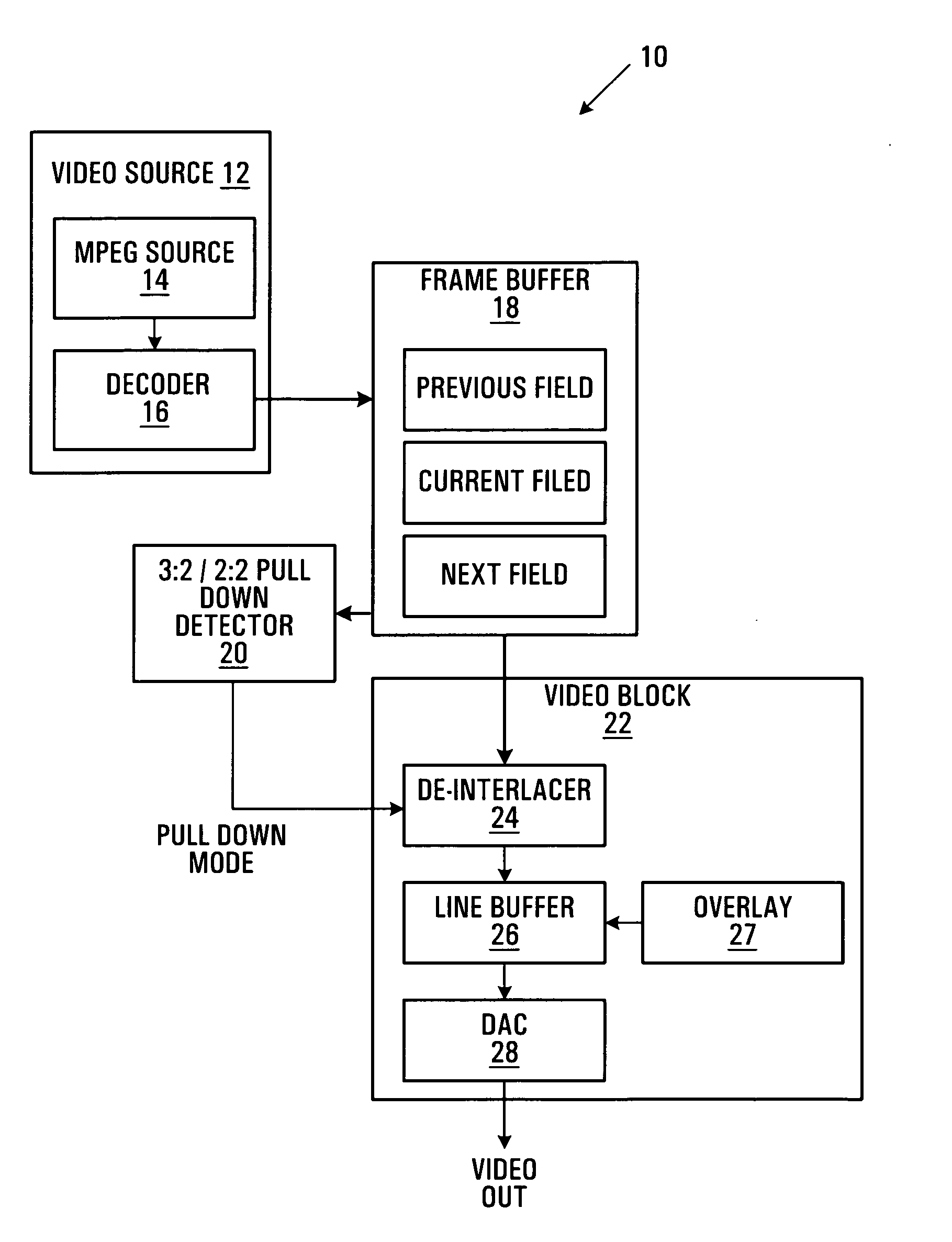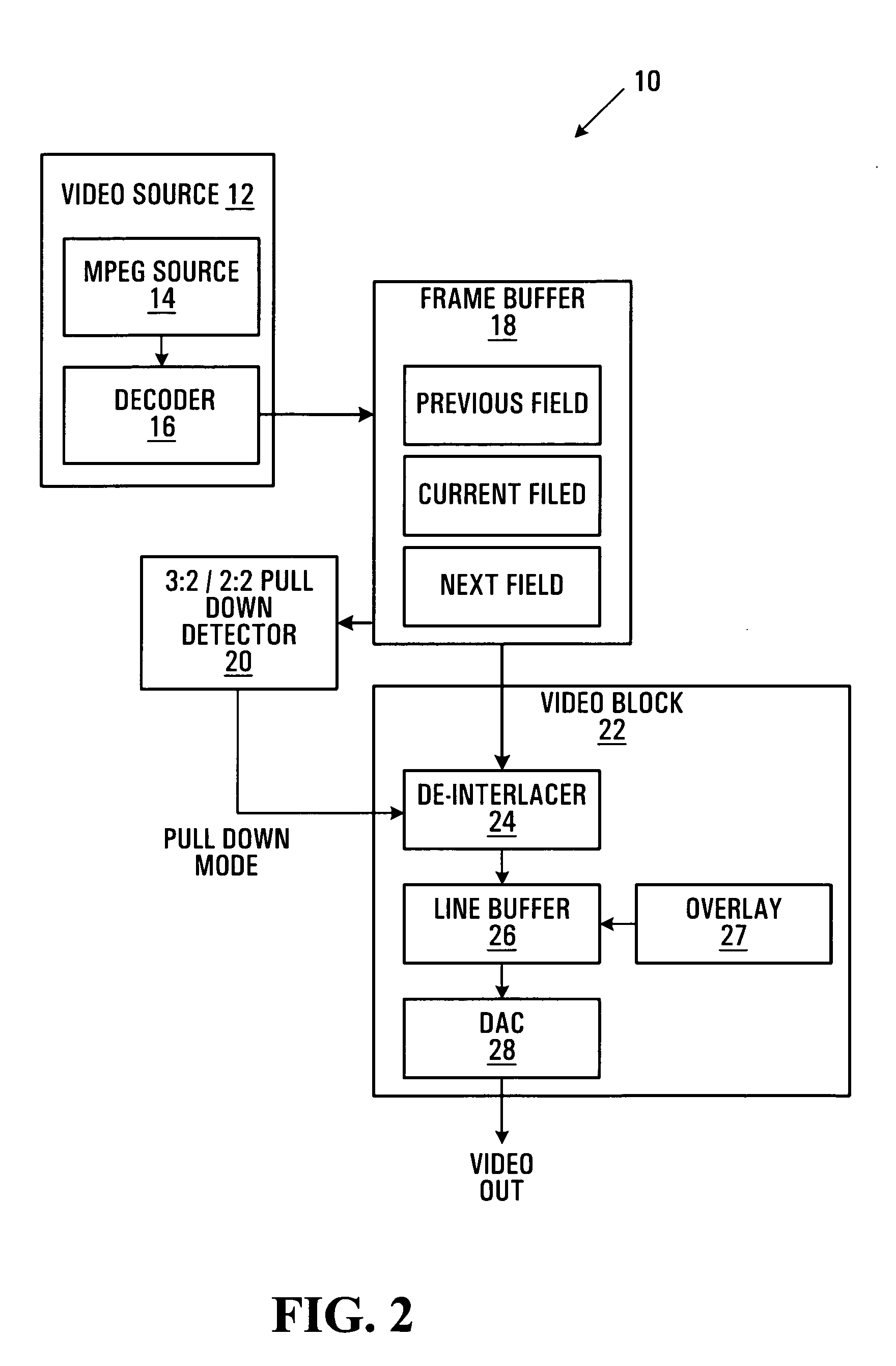Film-mode (3:2/2:2 Pulldown) detector, method and video device
a detector and film-mode technology, applied in the field of video devices, can solve the problems of slow movement, inability to reliably check flags, and often poorly edited videos,
- Summary
- Abstract
- Description
- Claims
- Application Information
AI Technical Summary
Benefits of technology
Problems solved by technology
Method used
Image
Examples
Embodiment Construction
[0025]FIG. 2 illustrates a video device 10 for generating a progressive scan video output signal. Video device 10 includes a film mode (3:2 / 2:2 pulldown) sequence detector 20, exemplary of embodiments of the present invention. As illustrated, video device 10 includes a video source 12 of digitized video providing a sequence of video fields to a frame buffer 18.
[0026] In the embodiment of FIG. 2 video source 12 provides decoded video stored as MPEG 1 or 2 video originating with MPEG source 14. MPEG source 14 may, for example, be a source of MPEG encoded video, and may for example be a DVD, read by an appropriate reader. MPEG source 14 could similarly be a demodulated MPEG stream carried by a satellite or cable television signal, or digital television signal. Decoder 16 decodes the digital stream into rasterized video frames or fields. For example, for non-progressive (i.e. interlaced) sources decoder 16 decodes interlaced video into odd and even fields and provides these fields to f...
PUM
 Login to View More
Login to View More Abstract
Description
Claims
Application Information
 Login to View More
Login to View More - R&D
- Intellectual Property
- Life Sciences
- Materials
- Tech Scout
- Unparalleled Data Quality
- Higher Quality Content
- 60% Fewer Hallucinations
Browse by: Latest US Patents, China's latest patents, Technical Efficacy Thesaurus, Application Domain, Technology Topic, Popular Technical Reports.
© 2025 PatSnap. All rights reserved.Legal|Privacy policy|Modern Slavery Act Transparency Statement|Sitemap|About US| Contact US: help@patsnap.com



